We have eebs. What on earth? Well, Brett and I are slightly potty and enjoy language games, and early on in our homestead beekeeping careers, we decided that our hives had eebs in them, and that eebs go sssssb! Did you know that you can find umblebeebs in Tasmania, and that spoonerising is also fun, especially when you end up with a politician called Farry O’Barrell? Try it sometime, as a brain exercise, and increase your endorphin levels in the process, with great benefits to your overall health and outlook!
Back to eebs. We got our first two hives back in 2010, and made the following rule for the inevitable: When someone got stung, the other person would buy them a drink, and toast their bravery. We wore long pants, long shirts over tucked-in T-shirts, burr blockers over leather boots, bee veils over wide-brimmed hats, and work gloves. I was the first person to get stung – in the wrist, because my sleeve rode up from my work glove as I lifted up a honey frame, opening a gap. It felt like a teaspoon of lava, made a little swelling, and earnt me an exotic hot chocolate at the local café.
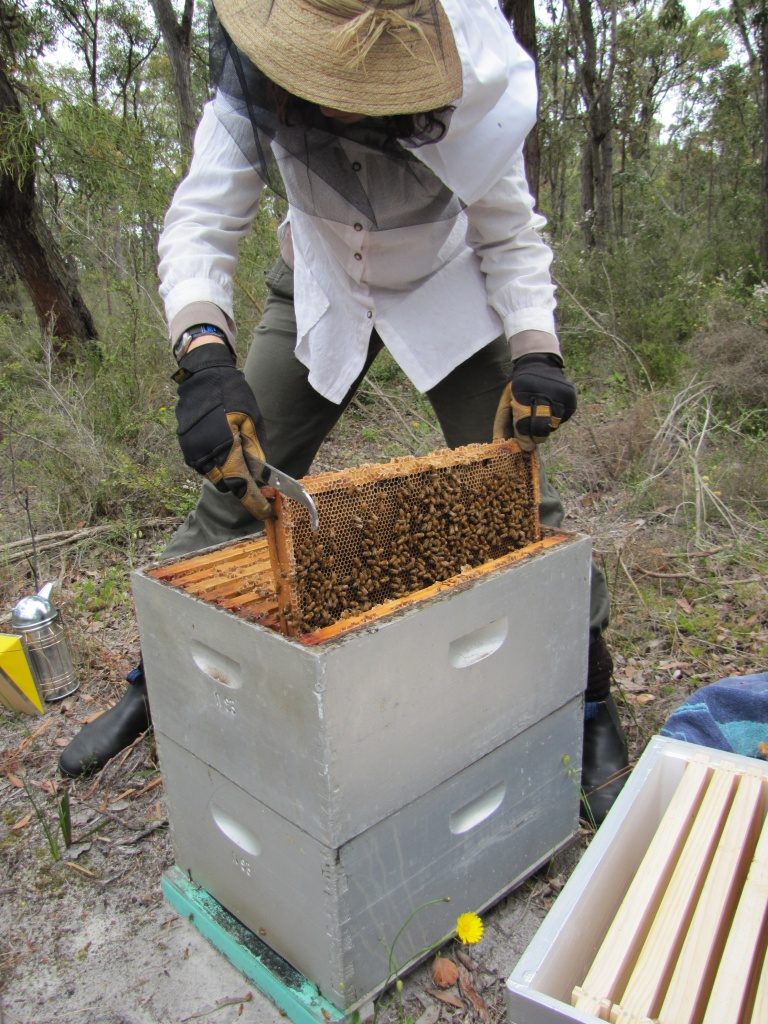
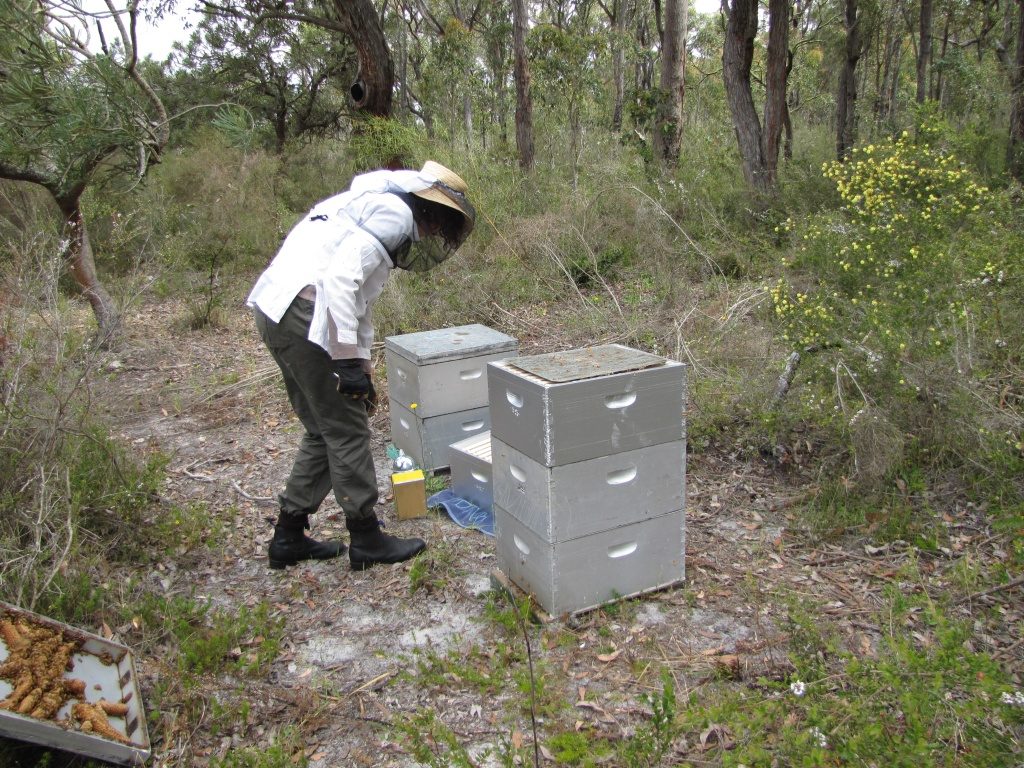
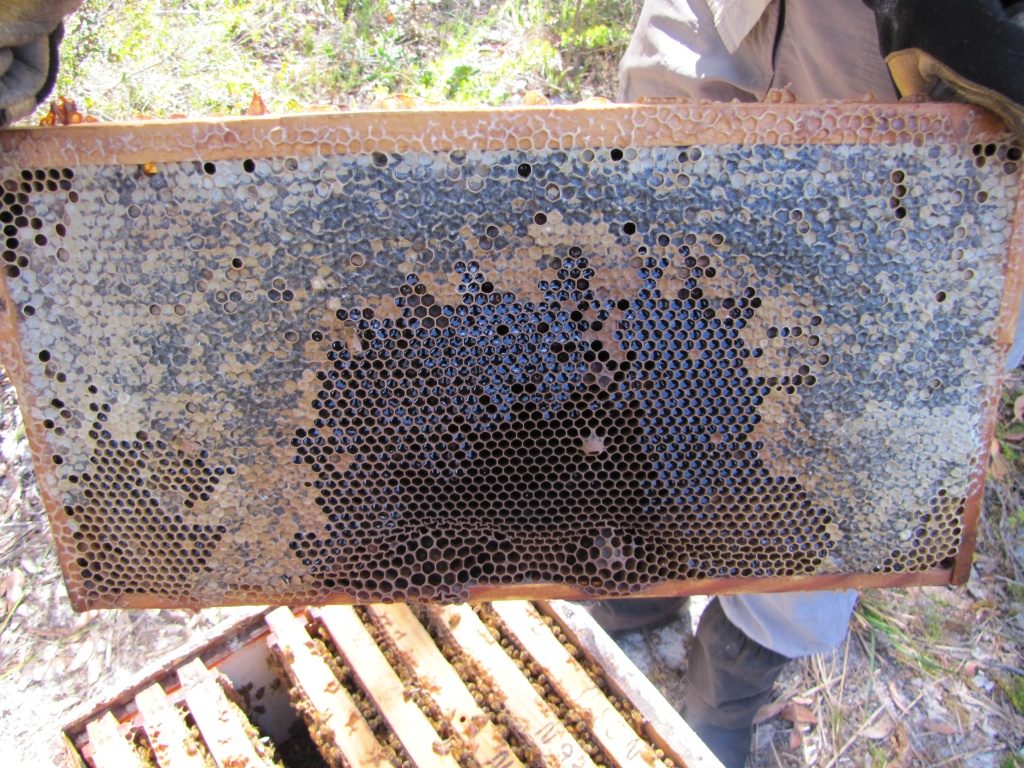
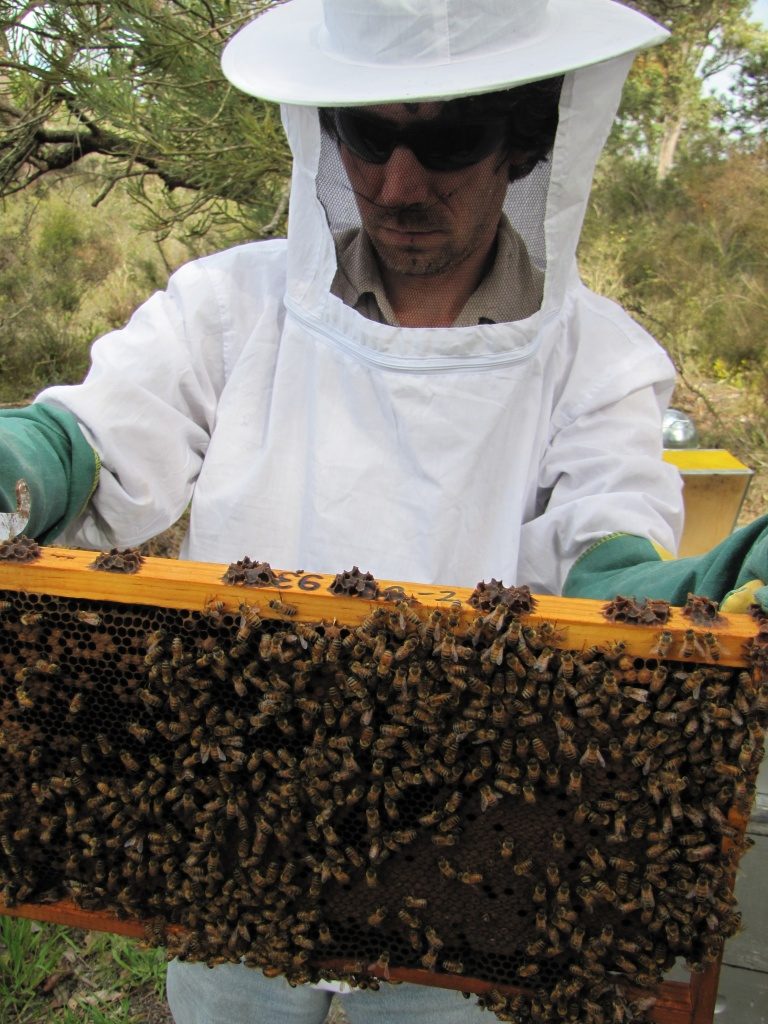
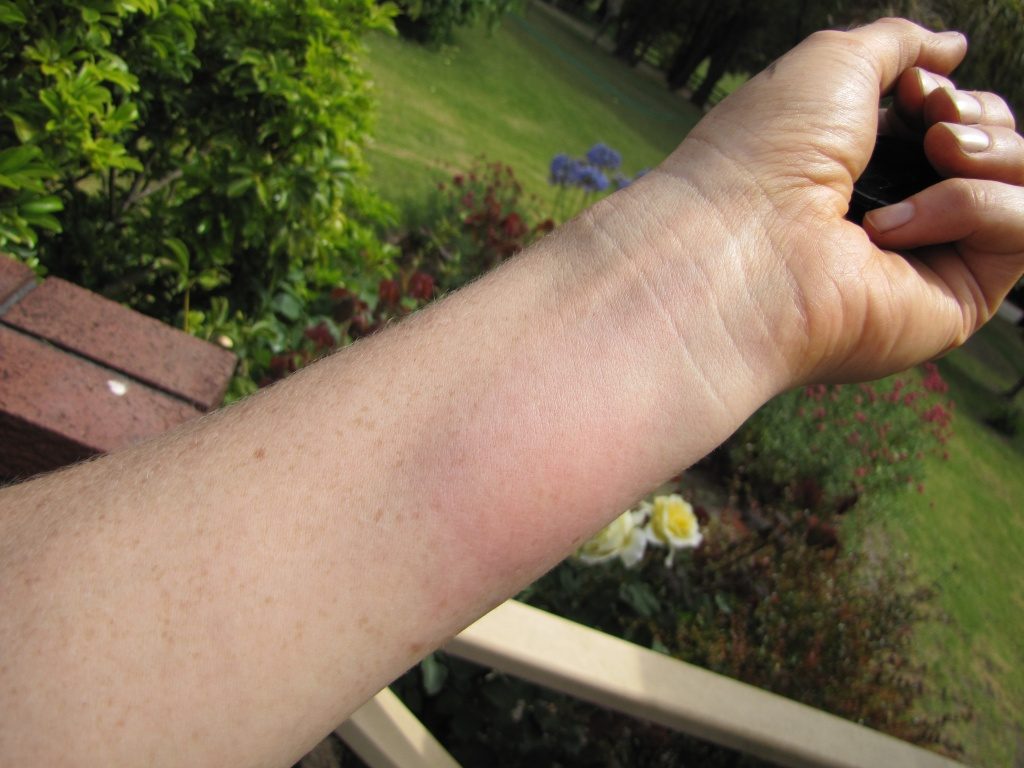
We Become Astronauts
Even when we decided we were in for the long haul and invested in long-sleeved gauntlets and expensive bee-suits that made us look like astronauts, we still got stung occasionally. Brett turned to me once with panicked eyes, “Help, Sue, there’s a bee in my beesuit!” It was actually crawling on the inside of his face screen! We walked away from the hives, I unzipped his hood, and managed to shoo the bee away and replace the hood without anything unfortunate happening to either husband or bee – this was a hive of very laid-back Golden Italians.
Another time, he was not so lucky, and earnt himself a cool glass of cider. We learnt to check carefully for little gaps in the hood zipper, and fabric folds making little channels into gauntlets or boots. This kept us secure enough to allow our bees to do their own queen replacements, meaning our hives are now infused with a lot of Caucasian bee genetics, from the local feral drones. Local commercial beekeepers generally re-queen yearly with Golden Italians, and these bees are a pleasure to handle, and highly recommended for beginners.
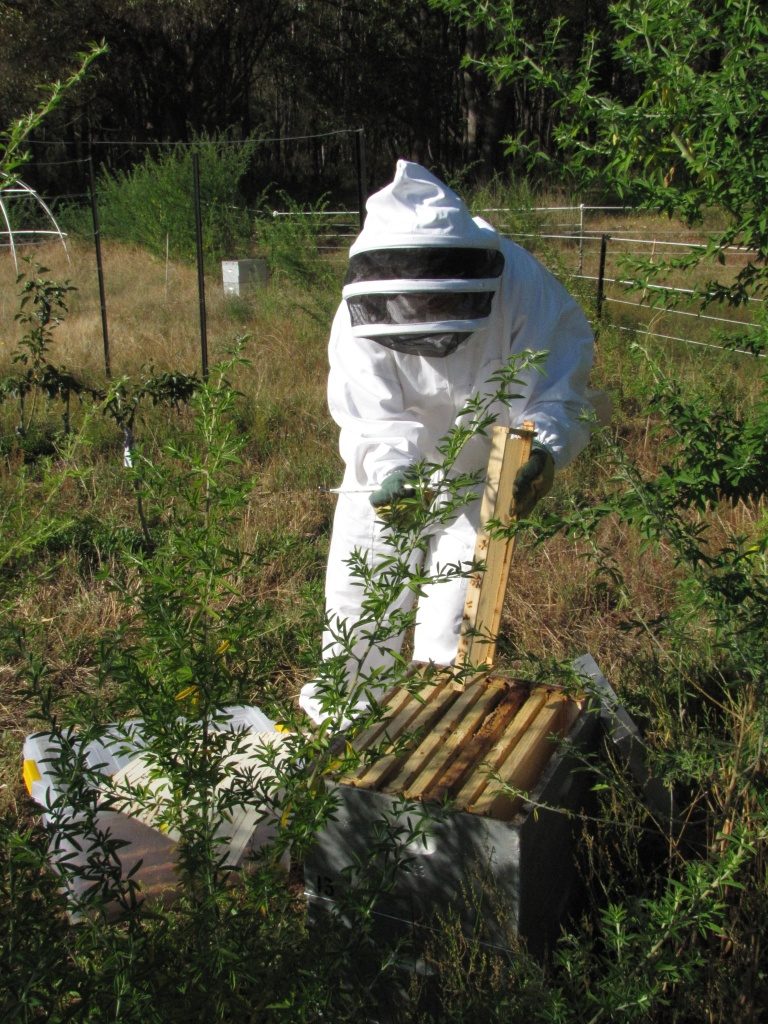
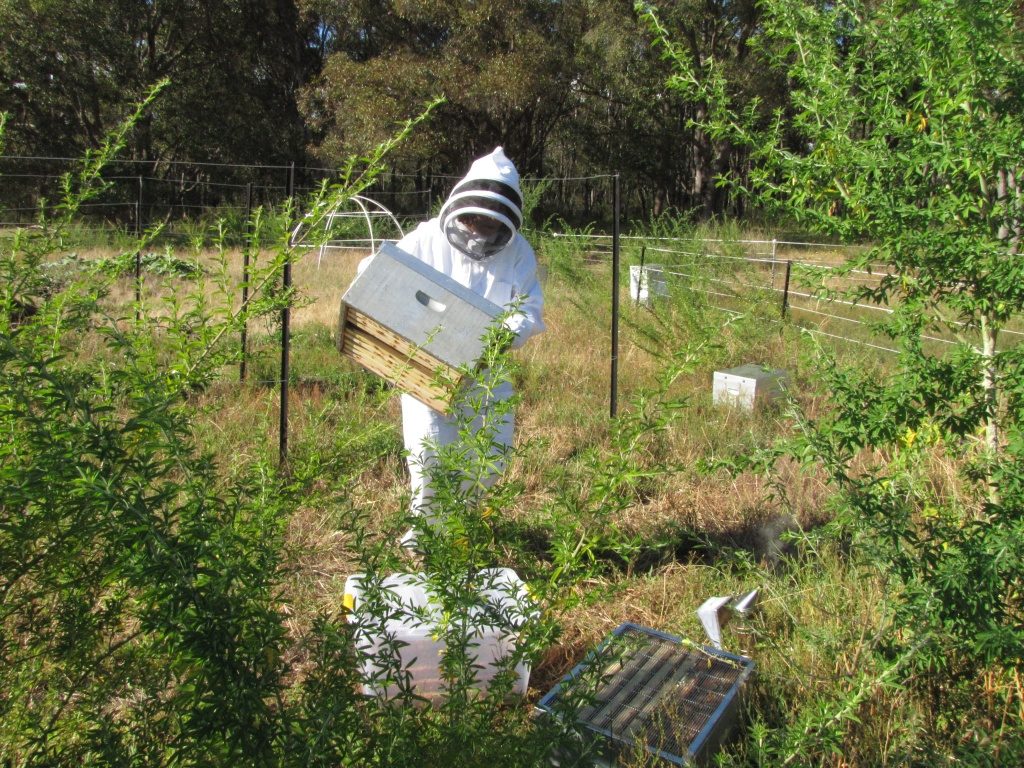
Little Caucasian Jetfighters
Caucasian bees have very dark bodies and are more aggressive than the brightly coloured Golden Italians, but we have also found them to be more resilient and better adapted to our conditions, which include cold winters and regular frosts. The original European honeybees introduced to our region by early settlers were mostly Caucasian bees, and Caucasian genetics prevail in the feral bee populations.
Sometimes we’ve had a particularly aggressive hive, and bees have surrounded our heads during a hive check, making highly disturbing noises reminiscent of a few dozen people having their teeth drilled simultaneously at the dentist’s, with a proportion of the bees landing and hanging off the fronts of our visors. When bees get really annoyed, they start bumping into you repeatedly in flight, literally screaming through the air like fuzzy little jetfighters, launching themselves at you kamikaze-like, bouncing off, and returning to do it all again. It’s quite an experience, but you can learn to laugh it off if you are well-protected. And we love our bees – they are fabulous critters. Well, most of them!
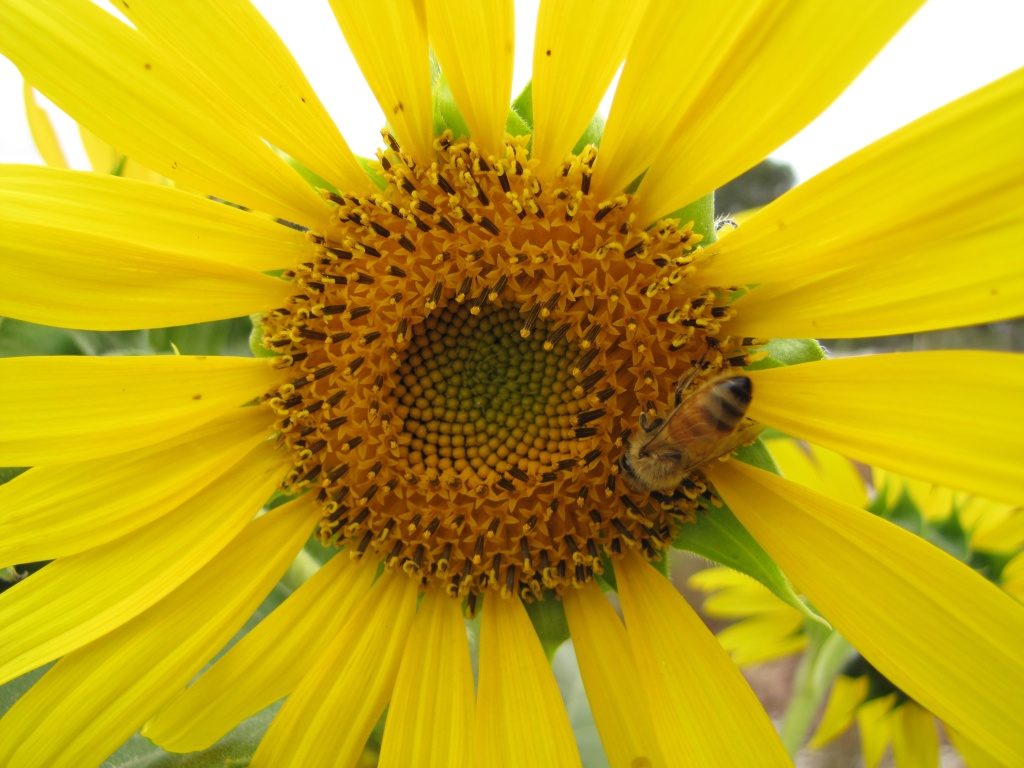
The Psychopathic Bee Incident
There was one time I was attacked out of the blue by a psychopathic bee. This was a highly unusual event – bees don’t generally attack you unless you are opening their hives, or are very close to their hives afterwards, on the same day (they’re primed to your shape and smell then); or you bring a lawnmower or other vibrating noisy gadget very close to their hives, at any time (so we wear bee suits when mowing within ten metres of beehives).
So for a bee to attack you at random at a distance from its hive is extremely rare, and it has only happened to me once in my life. Here I was, innocently directing the garden hose over the base of a pumpkin vine, enjoying the birdsong and sunshine and general pastoral bliss, when suddenly… nnnnrrrrreeeeeeowwww! Every beekeeper knows that sound and what it means, and standing in the garden in shorts and T-shirt, with limbs and face unprotected, my heart instantly dropped several storeys and started pumping frantically as the adrenaline flooded my bloodstream. This was in our early days of beekeeping, before I had learnt to suppress the instinctive panic reaction at the ultra-aggressive sound that conjures up Lilliputian attack chainsaws, so in the absence of PPE (personal protective equipment), I dropped my garden hose and ran.
This was, of course, a silly thing to do. Bees easily reach flight speeds of 32km/h, and I am not Usain Bolt, who peaks at 44km/h and actually has a reasonable chance of outrunning an angry bee. The sensible thing to do in a situation like that is to cover your face with your hands and find concealment in the form of foliage, bushes, etc, and to keep moving slowly away, weaving in and out amongst any available shrubbery. Alas, yours truly vainly legged it in the open, limbs flailing uselessly, making panicked noises, when nnnnrrrrreeeeeeowwww! the pursuing bee found my nostril, entered its cavity, and stung.
In your long-gone days of innocence, have any of you ever tried to pull out a nose hair? If yes, you will appreciate how exquisitely sensitive the inside of the human nose is, and you will almost certainly have never repeated the attempt. If no, give it a try sometime, and when your eyes have stopped watering, you will understand why this is a genuine technique by which actors make themselves cry. It’s also a good way to stop yourself nodding off during ultra-boring work meetings, although if you wear glasses, a better method is to paint some realistic eyes on the lenses so you can safely snooze under cover.
If pulling out a nose hair is an 8 on the pain scale, getting stung inside your nose by a bee is a voluptuous and long-lasting 10. There’s a reason the little buggers zoom in on this orifice: It’s the most bang for their buck, remembering bees can only sting you once and lose their lives in the process. At this stage in the proceedings, I was still running flat out, which in my case is at about half the speed of the admirable Usain Bolt, heading for the farm dam where my beloved husband was priming an irrigation pump, in my desperate search for aid and succour.
Of course, any cynics who have seen what horses do when pursued by botflies – namely, they run up close to another horse and try to transfer their unwanted passenger to them – might say that I was instinctively just looking for an alternative target for my psychopathic insect. If this was unwittingly the case – for the human psyche has many unflattering aspects often hidden even from ourselves, and I do not claim to know myself perfectly – then it was unrewarded. The stinger went in when I was still some way from the farm dam, and now I was ululating as well as running.
Again, this was completely senseless behaviour, as I was only pursued by a single bee, which was unable to sting again. The thinking parts of my brain even reminded me of this fact at the time, but my body kept running, and the bee, after I blew it out of my nostril, was still pursuing me and making those disconcerting nnnnrrrrreeeeeeowwww! sounds. And so, this inexplicably wrathful, fuzzy, tiny little jetfighter which weighed less than one gram had me, a large mammal over 70,000 times that mass, completely terrified and on the run, like an elephant fleeing hysterically from a sparrow.
Effective little beasties, aren’t they? It’s another illustration of the saying that it’s not the size of the dog in the fight, but the size of the fight in the dog that matters – especially if that dog also has chemical weapons.
The aftermath of this episode saw me in the house putting an icepack on my poor nose, which was swelling up as if I’d had several unsuccessful rounds in a boxing ring. For over a week after, I couldn’t show myself in public, and for another month, I was cowering whenever I heard any kind of buzzing insect – just normal, lovely, gently buzzing insects going about their everyday business, who did not sound like Lilliputian attack chainsaws – and I would look around wide-eyed if someone started an engine unexpectedly.
Some More Helpful Advice
I’ve since returned to normal – well, my normal anyway, whatever that is – and am in a position to offer some more helpful advice on this general topic, based on lived experience. The main way I get stung when not actually working with bees is when I get into the flight path of a hive and a bee unwittingly bumps into me and gets caught in my hair. This is not a common thing, since bees are pretty good navigators, but I have lots of woolly hair on my sconce, and in windy conditions especially, bees can get trapped in my mop. They then tend to panic, and once they panic, they try to sting.
If a bee is trapped in my hair at a fair distance from my scalp, I run for the nearest wide-toothed comb – human or horse, no matter – dangle my head towards the ground, and comb out the bee, before beating a hasty strategic retreat into the bushes, because the moment a bee is combed out and back in the air, it typically will be in attack mode from the panic and the handling, and will remain in that mode, looking for you or someone who looks like you, for a good five minutes to half an hour. Get back in the house, and have a cuppa. Wear a hat (with optional bee veil – a mozzie veil from the camping shop is a good substitute if you’re not a beekeeper) when you come back out, and Bob’s your uncle.
If the bee is trapped close to my scalp, I have learnt to fish it out with my bare hands if necessary, because it is better that a bee stings you in the hand than in your scalp. Having thrice been stung in my scalp, I do not recommend that experience, because each time and no matter how much ice I packed on afterwards and how soon I took antihistamines, I ended up with a grossly swollen face. It turns out that blood and lymph from the top and sides of the scalp drain via the face, marinating it in bee venom in the process. In the progression of the venom down this drainage path, my forehead will sport a swelling first, then the eye directly underneath, then the cheek, and the whole thing takes at least three days to return to normal. A sting in the hand is not such a big deal.
The donkeys have brayed disconsolately for the last hour because I have sat here typing this morning, instead of tending to their needs for back-scratching, general two-legged company, and having sweet nothings whispered in their giant bunny ears. I have brayed back multiple times through the open window to let them know I am still alive and on my way, and must now make good on this communication. Until next time, enjoy all your animal antics, great and small – and remember to cover your faces, dear readers, if you are the target of an unexpected bee attack.
